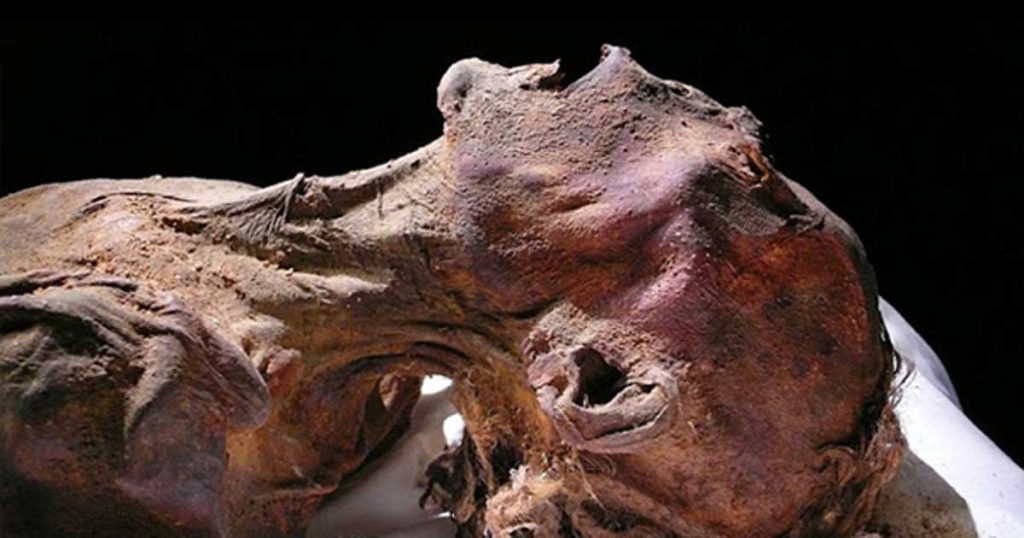Introduction
Mummification in ancient Egypt was a sacred and elaborate process, guided by religious rituals, ensuring a prosperous afterlife for the deceased. However, history took an intriguing turn when an unidentified mummy was discovered in 1881, deviating from the customary preparation. Unveiled in 1886, archaeologists were shocked to witness a horrifying sight – a contorted face caught in a scream. This enigmatic mummy, named “Unknown Man E,” was housed in a nameless sarcophagus, leading to a century-long mystery. Recently, a team of Egyptologists, joined by National Geographic, embarked on a captivating journey to uncover the secrets of the ‘Screaming Mummy.’
The Astonishing Discovery of Unidentified Mummy

The year 1881 marked the unearthing of a remarkable find in DB320, an inconspicuous cavern located 300 miles south of Cairo in Deir El Bahri. Amongst 40 mummies, Unknown Man E stood almost unnoticed, surrounded by legendary rulers like Pharaoh Ramses II, Pharaoh Seti I, and Thutmose III. These were prominent names in ancient Egyptian history, adding to the allure of the discovery.
The Dilemma of the Unsolved

Unknown Man E’s mummification was anything but customary. His sarcophagus lacked any name or identification, raising questions about his identity and circumstances of burial. The absence of proper identification markers suggested an intentional curse, dooming him to an eternity in the afterlife without peace.
Theories of Identity of Unidentified Mummy

Prior to the re-investigation, three prevailing theories speculated on Unknown Man E’s identity. The first proposed that he might have been an Egyptian governor serving abroad. Novices, unfamiliar with proper customs, could have inadequately prepared him, explaining the unconventional mummification. However, the theory was discredited due to his presence among the royals and the deliberate lack of identifiers.
The second theory suggested he was a foreign prince who died while in Egypt. Nevertheless, this theory failed to explain the bizarre placement of the mummy without a name. CT scans of the skeletal remains revealed unmistakably Egyptian features, aligning with the conclusion that he belonged to the royal family.
The most compelling theory points towards Prince Pentewere, a son of Pharaoh Ramses III, who fell out of favor during his father’s reign and was accused of plotting his murder. The unmarked grave could have been an eternal punishment for the alleged traitor.
The Curse of the Nameless
In ancient Egyptian belief, a body without a name meant an inability to reach the afterlife. It is speculated that Unknown Man E’s intentional lack of identification was an act to ensure he never found peace in the afterlife.
Perplexing Appearance of Unidentified Mummy
The mummy’s startling visage, with the face frozen in a scream, puzzled experts for years. However, most Egyptologists now believe it is merely the result of the head falling backward after death. To validate his lineage, archaeologists plan to conduct a DNA test to establish a familial connection between Unknown Man E and Ramses III.
Conclusion
The enigma of Unknown Man E, the ‘Screaming Mummy,’ continues to intrigue and captivate. The quest to uncover the truth behind his identity has shed light on ancient Egyptian burial practices and beliefs. The story of this nameless mummy serves as a captivating reminder of how history’s mysteries can echo through the ages.
Was Unknown Man E’s mummification typical of ancient Egypt?
Unknown Man E’s mummification deviated from customary practices, suggesting an intentional curse.
Why was the mummy called the ‘Screaming Mummy’?
The mummy’s face appeared contorted in a scream, which led to its evocative nickname.
What was the purpose of mummification in ancient Egypt?
Mummification aimed to ensure a prosperous afterlife for the deceased by preserving their bodies.
What did the absence of a name mean for an ancient Egyptian?
A body without a name was believed to be unable to reach the afterlife, leading to eternal restlessness.
What does the recent investigation reveal about Unknown Man E’s identity?
The investigation points towards the possibility that Unknown Man E might be Prince Pentewere, the disgraced son of Pharaoh Ramses III.



